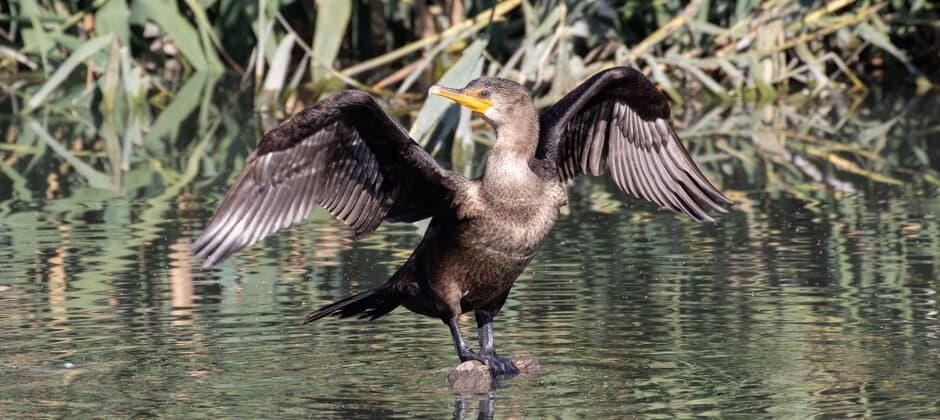Share this article
USFWS finalizes cormorant management rule
A new special permit will allow state and federally recognized tribal wildlife agencies in the contiguous United States to lethally control cormorants.
In late December, the U.S. Fish and Wildlife Service published a final rule and final environmental impact statement for the new permit to manage conflicts associated with double-crested cormorants (Phalacrocorax auritus).
There are several populations of double-crested cormorants across the country, with over 90% in the Atlantic, interior and southern populations combined. Historically, most inland cormorants would migrate south to the coastal U.S. and Mexico, but in recent years many have taken to wintering near aquaculture facilities throughout the southern U.S., which has become a common source of conflict. According to the USFWS, cormorant populations in North America have increased dramatically since the 1960s, especially in the interior and Atlantic populations
Under the new permit, states and tribes must first try nonlethal methods to reduce conflicts with wild and publicly stocked fisheries or to manage cormorants at state or tribal-owned hatcheries and release sites. If those methods are unsuccessful, they can implement lethal control. The Service will also issue the new special permit to allow states and tribes to address impacts to health and human safety and impacts to threatened and endangered species or those listed as Species of Greatest Conservation Need in State Wildlife Action Plans.
“This special permit will help minimize human-wildlife conflicts while maintaining sustainable cormorant populations as required by the Migratory Bird Treaty Act.” said USFWS Director Aurelia Skipwith in a press release. The agency retains overall authority over double-crested cormorant take nationwide to ensure that it is consistent with management objectives.
Cormorants in the U.S. are managed under the Migratory Bird Treaty Act and can only legally be killed with authorization from the USFWS. The agency has been providing this authorization to individuals, private organizations and other agencies on a case-by-case basis. In the past, USFWS has also issued broader depredation orders, which establish conditions where entities or individuals can take cormorants without a depredation permit.
In 2016, federal courts invalidated two previous depredation orders and tasked the agency with more thoroughly considering the effects of such an order. Meanwhile, culls continued in other states under separate individual permitting agreements.
Since those orders were invalidated, conflicts have continued, prompting the USFWS to develop this new rule for cormorant management. In January 2020, the agency began the processes of developing this rule, publishing an advance notice of proposed rule-making and announcing its intent to prepare an environmental impact statement.
The new rule goes into effect on Feb. 12. More information about the rule-making process is available here.
The Wildlife Society recognizes the importance of wildlife damage management and supports wildlife damage prevention, management programs and techniques that are biologically, socially, environmentally and economically valid, effective and practical.
Read The Wildlife Society’s standing position on wildlife damage management.
Header Image: The U.S. Fish and Wildlife Service has developed a new rule that will allow states and tribes to more actively manage double-crested cormorants. Credit: Ryan Mandelbaum








